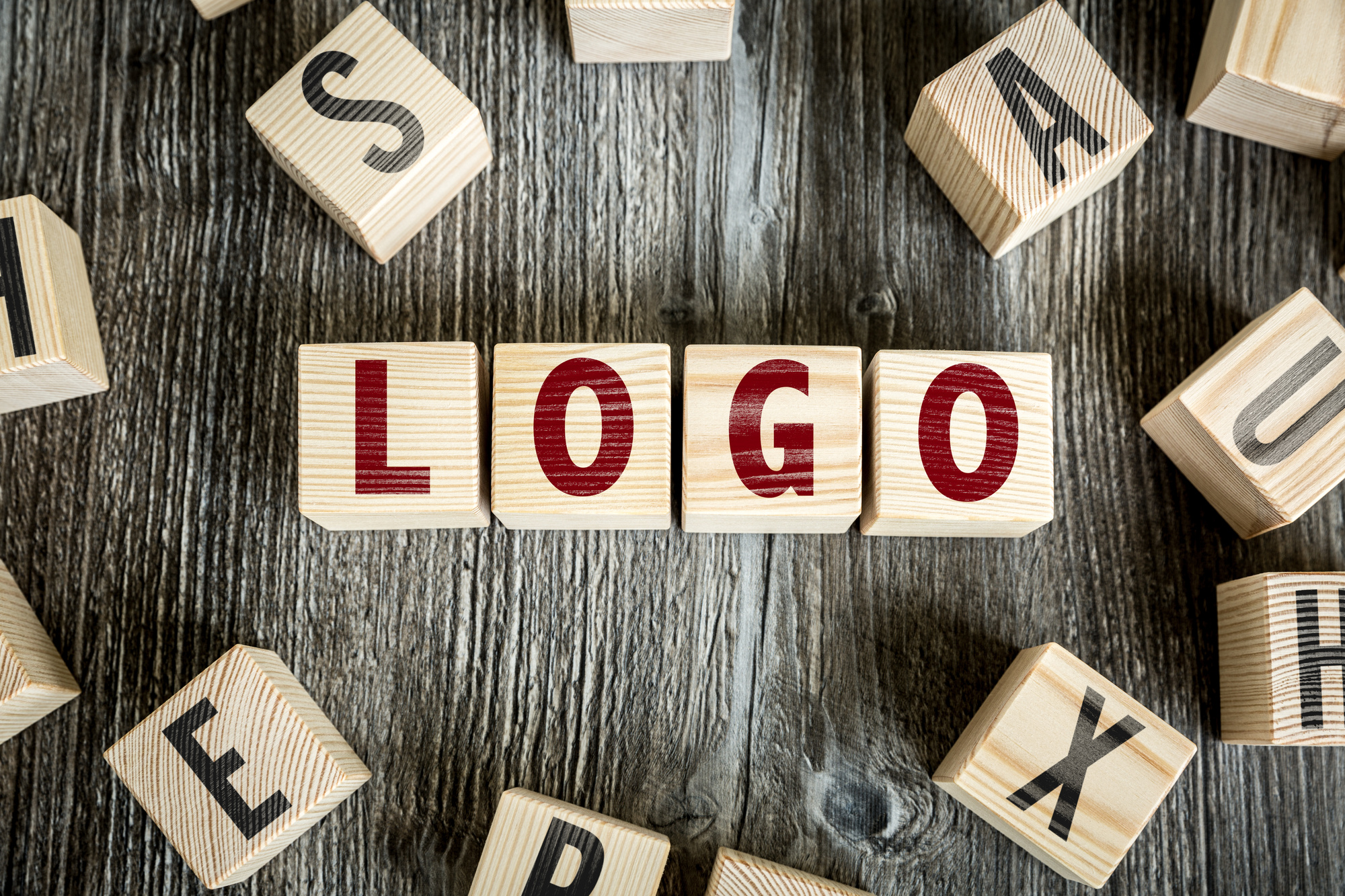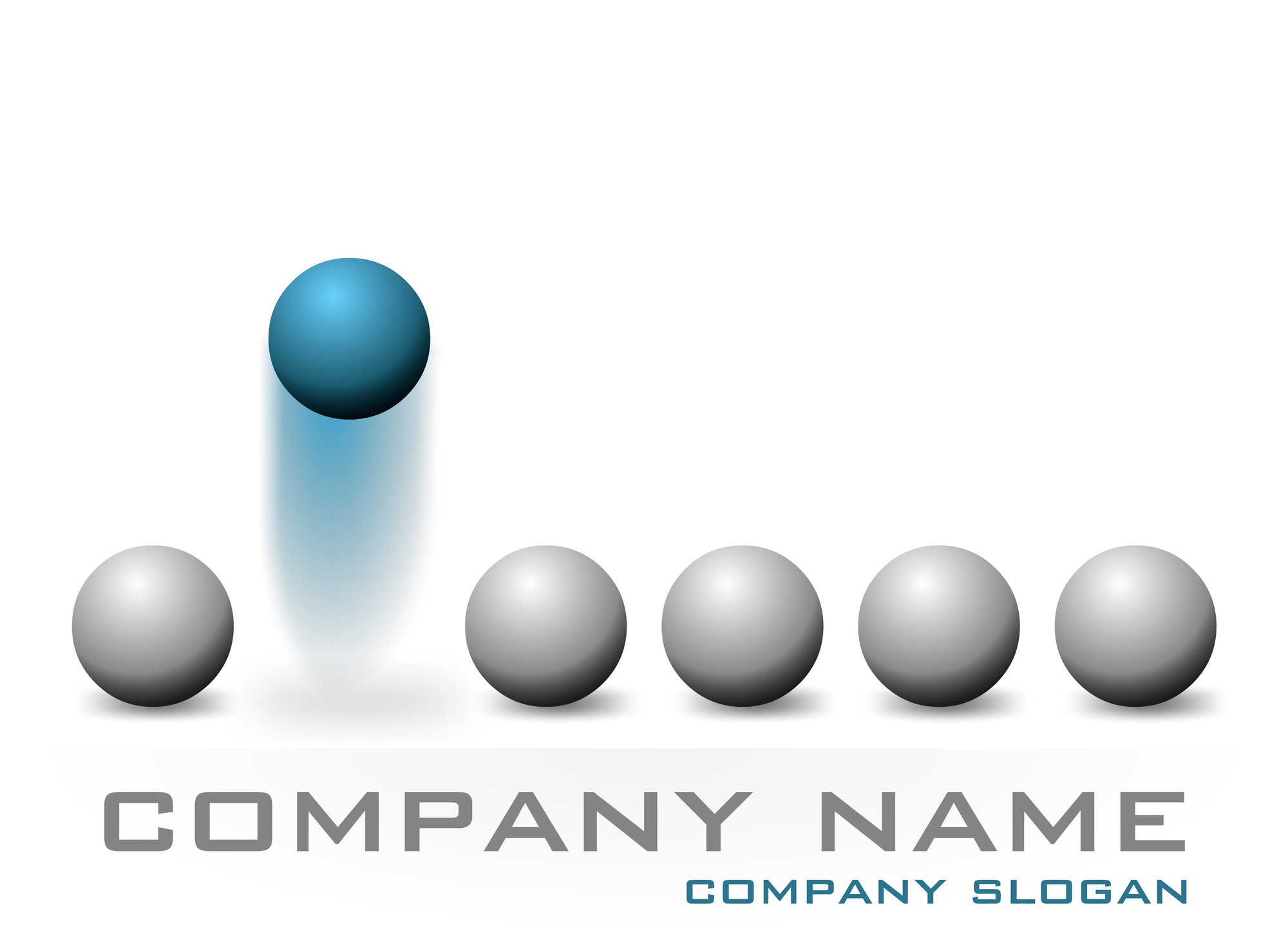Catch Their Eye: How to Create Unique Logos for Your Optometry Practice
Posted on October 03, 2018 by Logo Design Tips and Tricks

There are over 41,000 optometrists in the United States. A number that goes up every year as more students find access to affordable higher education.
As optometry continues to become a more studied field, competition for patients will become more difficult and that reality will make branding integral to the success of those looking to open their eye care practice.
One of the most important components of your optometry office’s overall branding is its logo.
Logos are the first thing your customers will see when engaging your services and will either facilitate them having positive feelings towards you have to offer or alienate them which will make it difficult to convert them into lifelong patrons.
To help your optometry office’s logo get off on the right foot, here are some tips on how to create effective and unique logos.
1. Keep Simplicity at Your Logo’s Core
The unique logos you consider leveraging for your optometry practice should be able to communicate information at a glance.
It should answer people’s topical questions like, “What do you do?” “What’s your area of expertise?”, etc.
To that end, you’ll find that many optometrists find unique ways to play with the image of an eye or glasses which leads to their successful creation of simple, yet effective logos.
2. Don’t Get Too Busy in Your Execution
Many people perceive simplicity with logos as using simple shapes like circles and squares. That can be true, however, slapping tons of different geometric shapes into your logo, no matter how simple each one is, can create a logo that becomes too much.
Take the London Olympics logo for example. This logo’s pieces are simple enough but their synergy is jarring.
For that reason, be sure that your optometry logo only incorporates one or two elements into its design.
3. Keep Your Logo as Original as Possible
We get it, as an optometrist, your go-to elements are going to be eye shapes, glasses, contact lenses (which you can read more here about), etc. That reality can make it difficult to create logos that really stand out.
That’s not to say that you shouldn’t try to be unique though.
Remember, if your logo feels like a copy, you may end up inheriting some of the bad will a similar looking brand carries. To make sure your organization stands on its own, take the time to analyze the logos of other optometry practices in your area and try to make sure your unique logos don’t bear any resemblance.
4. Design Your Logo as a Vector Graphic
There are a lot of logo creation tools out there, many of which will output your logo into different formats. As a rule of thumb, you’ll want to have a vector graphic of your logo to use as the master copy.
Vector graphics are infinitely scaleable which means your logo can go anywhere. That means it will look right at home on a pamphlet and can also be blown up to a billboard-size model without getting pixelated.
5. Start With Black and White
Color is an incredible tool that can be leveraged in design. It can make onlookers feel emotions and will help them draw conclusions about a brand.
With that said, color can also distract during your logo’s creation.
Many first time designers trying to work on unique logos fall into the trap of getting carried away with color and don’t focus on the much more important shape of their logo.
To avoid that with your optometry logo, first design it in black and white. Once finished, see if people get what you’re communicating and make sure the shape of your design is carrying your desired impact.
Once you’re confident in your logo’s foundation, you can then add color to give it that extra oomph!
6. Consider Typeface Logos
Most logos rely heavily on images. After all, images are worth a thousand words.
Still, some of the most effective logos on earth leverage nothing but original typefaces to get their brand’s story across.
Think Disney or Google. Both don’t use images in their logos yet they’ve created branding that’s recognized across the world.
Bottom line, be open to experimenting not only with the stereotypical eye or glasses-based optometry logo but also with the creative use of text.
7. Get Inspired by Other Successful Logos Both Within and Outside of Your Niche
At the end of the day, there’s no better way to draw inspiration for unique logos more so than by taking the time to admire the work of others.
As an optometrist, look at the most successful optometry companies in the country. Inspect their logos.
What do the logos have in common? What do you like about them? What do you dislike?
Going beyond optometry logos, what can you learn from the Nike logo? What about McDonald’s golden arches?
Becoming a student of logo design will skyrocket your foray into creating breathtaking logos more so than anything else. So get out there and start studying!
Wrapping Up How to Create Unique Logos for Your Optometry Practice
How you brand your business will have a profound effect on its success. It doesn’t matter if you’re in the fast-food niche or in the business of helping people see better.
That reality was the basis of our article above and we hope that, through our unique logos tips above, you’ll find the inspiration you need to create stunning logos that will help skyrocket your business beyond your competition!
If you’re not a professional designer, we appreciate that creating an incredible logo can be incredibly tough. The good news is though that there are tools out there that can turn anybody into a world-class designer in minutes!
Our personal favorite of those logo creating tools… Online Logo Maker.
Over 2 million brands rely on online logo maker to create engaging branding elements for their business. Let our tools provide you with the same incredible value!
Try online logo maker right now, 100% free!
A Guide to Creating Stunning Personal Logos
Posted on October 02, 2018 by Logo Design Tips and Tricks

As a business, your logo is everywhere. From your website to your social media and all your printed promotions, it’s the first thing your audience will see.
Today, your logo is the most important quarter-inch of your business. With this in mind, you need to be sure that you’re hitting the right chord from the get-go.
Read this guide on how to create stunning personal logos that will stick with your customers.
Align your Logo With Your Brand Identity
Your logo must represent the personality of your service or product. It needs to give your customers or clients a glimpse into what they can expect from you.
You wouldn’t want customers to confuse your bakery for an accounting firm, would you?
So, make sure that your logo tells your customers the niche in which you operate. Create a logo that tells a story about your brand.
The Best Personal Logos Start With a Creative Brief
A creative brief will help you stay on track with your brand identity. You wouldn’t start a company without a business plan, right? Well, the same goes for design projects and a logo is no exception.
When designing a personal logo, it’s easy to lose track of the fact that its part of your business identity.
Your creative brief will inspire you with new ideas. It will also help you come up with a design that aligns with your business plan.
Your creative brief should include:
- A summary of your brand
- The image and tone you want to follow
- Information about your target audience
- An overview of your competitors
- The date by which you need your personal logo design ready
- Your budget
As you can see, your brief is about more than the creative parameters of your logo. It will also keep track of operational aspects like your budget and due dates.
Get Some Inspiration
To get inspiration, start by creating a mood board with all your ideas. Then, look at what other designers are doing at the moment.
You can do this by looking at your competitors’ logos. You can also look in search galleries. Make sure you jot down any logos that grab your attention during this process.
Also, get inspiration from the name of your business. You may be able to create a pun from the name that you can transform into design work.
Choose a Unique Design
The key to making your personal logo design unique is injecting your creative personality into it.
To achieve this, you have to think outside the box. List the aspects of your brand that are most memorable- the aspects you want your audience to remember you for.
Now find a way to portray these memorable aspects into your logo design.
Specify the Name You Want to Use
By including your company name in your personal logo, your audience is more likely to connect with you immediately.
You can use variations of this name, especially if it’s long. For example, you could use your:
- Full name
- Nickname
- Surname
- Initials
For a striking effect, you could design your logo from your name. Some examples of this include Facebook, LG, and Twitter.
Use a Trial and Error Technique
Designing a logo isn’t quick. You’re going to have to be patient. The key is to draw up various logos to get close to your final design.
You should create a small team of people that offer suggestions and ideas. From there, you can mix and match them.
Make sure you doodle all your ideas so you get a visual feel for them.
But, remember. Don’t over complicate things. Your logo should stay simple and eye-catching.
Try Different Colors and Backgrounds
Every company should have specific color branding. For example, Facebook is blue and white and Amazon is black, white, and yellow.
Whichever colors you choose for your color branding, you should use them in your personal logo design.
Color inspiration can come from anywhere. You could start with your favorite color. Your name could also have a color in it. For example, John Green. In this case, why not go with green as your primary color?
Also, consider the emotion you want to evoke with your audience. Big business use color to affect their audience’s reaction to their brand. You should use this technique to make the best first impression.
Create a Logo You Want to Showcase to the World
You need to create a logo that you want the world to see. After all, your logo is how your audience identifies you. If you don’t create an eye-grabbing logo from the get-go, you’ll eventually change it.
If you change it, your audience won’t recognize it, thus making your entire brand less memorable.
Create a logo that you are proud to showcase on all your business assets. These include your:
- Marketing materials
- Letters
- Resume
- Portfolio
- Business cards
Your audience should also find it easy to identify you via your logo on social media platforms.
Refine Your Concept
Once your concept is ready, you need to polish it to come up with a final product. This is where your personal logo design comes to life.
Create rough drafts of your final designs and share them with friends and family. Get as much feedback as you can.
Also, make sure that the answer to all the following questions is “Yes”:
- Does your logo speak to your target audience?
- Is it simple?
- Is it balanced?
- Is it evergreen?
- Does it use negative space to your advantage?
- Does it match your color branding?
When choosing your final logo design, don’t be afraid to go for the more bizarre and extravert choice. If that’s what your company stands for and that’s the image you want to portray to your audience, that’s okay.
Get Help From Online Logo Maker
Creating a logo is a complex process. You have to ensure that it aligns with your branding and company beliefs. You also need it to be eye-catching so that it’s memorable to your audience.
If you need a quick logo that aligns with your branding, why not contact Online Logo Maker today?
Our free logo maker takes the stress out of designing personal logos. In fact, with it, you’ll have a logo with unlimited downloads in less than 10 minutes!
How Much Does a Logo Cost and How Should You Pay a Designer?
Posted on September 30, 2018 by Logo Design Tips and Tricks

As the average small business puts aside $75,000 a year for digital marketing, every small business owner knows the importance of counting each penny. That number might sound like a lot but if you consider how much does a logo cost, you’ll find that it can take a significant chunk of that budget.
If you’re wondering whether or not you should pay for a designer, you should consider some alternative methods.
Here are four tips for calculating a logo cost and avoiding big payments to a designer.
1. Doing It Yourself
When you make your own logo, you can save a lot of money. You can also end up making a serious mistake and end up with your logo going viral.
When you build your own logo, you can calculate the cost by how many hours it takes you. If you’re not dedicating a set amount of time to your logo, you can design it over the course of a few days or weeks.
When you do it yourself, you’re not going to have to pay anyone for anything but maybe the printing costs.
If you’re tracking your hours, try using a pay stub maker so you can write it off later.
However, if you want your company to be considered professionally, you need a professional logo. If you’re not a professional designer, don’t give your customers an amateur product.
2. Buying a Template or Using Fiverr
A good way to get started and to end up with a logo that will look good when printed on everything from business cards to billboards is to use a template. A template can ensure that you build a logo that looks professional and can fit the needs of printers.
When you buy a template or use Fiverr, you can get the basic elements for a meat and potatoes logo that will do the job you need it to. A Fiverr logo will be inexpensive but it might turn out to be derivative or emphasize the wrong aspects of your business.
3. Using an Online Tool
You can get a cheap subscription to a professional grade online tool to design your new logo. For around $10, you can start designing your logo on your own.
You’ll get access to some simple FAQ for first time designers and will be able to use limitations that check for alignment, sizing, and prepare you for printing. However, you’ll still need the design chops to get it done.
4. Crowdsource It
One of the best ways to get some exposure for your business is to hold a contest for designers. If you pay a small award to the best logo design, you can get professional unemployed or freelance designers to put their best foot forward. You’ll end up with some great choices and have access to great talent.
This might cost you a little more than the other methods but will be cheaper than hiring a professional designer outright.
Don’t Skim When Calculating How Much Does a Logo Cost
When you’re looking to figure out how much does a logo cost, you don’t have to be faced with a bill that eats up half of your marketing budget. By considering alternatives to hiring a designer, you might save big bucks and make it easier to promote your business.
If your number one motivation is to avoid Photoshop, check out our guide to get around it.
7 Ideas for Cool Company Logos That Are Perfect for Promotional Products
Posted on September 29, 2018 by Logo Design Tips and Tricks

It takes only 10 seconds for people to make a first impression of a business logo, and it only takes 5-7 impressions for people to recognize a logo.
A logo is an important part of your company brand. A good, quality-designed logo reflects your company and allows others to recognize your products and services.
Are you a new business who is planning on using promotional products to promote your brand? Or maybe you’re a company looking to revamp your old logo?
Either way, you have to make sure your logo design is eye-catching and looks great on a promotional product. Want to learn more? Keep reading for 7 tips and ideas for creating cool company logos.
Why is a Business Logo Important?
Nearly 77% of buyers purchase products based on a brand name. These days, we interact with brands much differently than we did a couple of decades ago.
Before the rise of the internet and smartphones, we would interact with brands and see their company names and logos on billboards, on our clothes, and on television or magazine advertisements.
Today, we interact with brands on a much more personal level. We interact with brands every time we open up our smartphones and use their apps. We also connect with brands on Facebook and Twitter. We see their ads not only when we watch shows, but when we are surfing the internet or browsing on our phones.
We now have a closer, more intimate relationship with brands, and a brand’s logo is what represents each of those brands.
We see logos in our countless interactions with companies. If we have a positive experience with a company, the logo will represent those positive experiences.
The Benefits of Promotional Products
Giving out promotional products can help improve your brand reputation and garner positive interactions between consumers and your business. According to a 2016 ASI Ad Impressions research, 85 percent of consumers surveyed remembered the name of the business that provided them with a promotional product.
What’s more, buyers were 2.5 times more likely to have a positive impression toward a company that gave them a promotional item compared to a company that showed a digital advertisement.
What are some popular promotional products? The popularity of promotional items depend on their usefulness, how long they will last, and the number of impressions they garner.
Some popular useful products include tote bags, pens, USBs, and umbrellas. These are products that consumers will repeatedly use.
7 Cool Company Logo Ideas
By combining the power of a strong logo with promotional products, you can set your company up for positive brand recognition. Keep reading for 7 cool company logo ideas.
1. Create a Text Logo
Consider designing a text logo. When thinking of popular text logos, think of FedEx, which simply uses its company name with the famous purple and orange color scheme.
When designing a text logo, spend some time on the font decision. The font is the main show of a text logo. Research different fonts and see which will give your logo the most powerful presence.
Think about your company brand and what you want to represent with the font you choose. If your business takes itself seriously, you might want a font with bold, strong lines. On the other hand, if you want to convey a fun tone for your business you might want a font that reflects that.
Choose a few different fonts and ask for feedback to see which option resonates the most with others.
2. Play Around with Colors
Think about the connotations behind each color. Color is one of the first aspects of a brand that our brain notices.
Blue is the most popular color that companies choose for their logo. It represents dependability and trust. Another popular color is green which reflects sustainability and growth.
Grey represents professionalism and authority. Brown reflects warmth.
If you want to go for brighter hues, yellow shows a company as happy and full of energy. Orange is friendly and cheerful. Pink is feminine and fun.
Purple represents elegance. How about black or white? White represents purity or simplicity while black adds a bold, mysterious tone.
Think carefully about your choice, and we recommend you stick to 2 or 3 colors max. You want your logo to be easy on the eyes.
3. Add a Hidden Meaning
Think about adding a hidden image or meaning in your logo. For example, the new DC Comics logo has the “D” peeled back to show the “C” which reflects its superhero comic roots.
Another example of a hidden logo meaning is the colorful peacock in the NBC logo.
4. Try an Abstract Design
Want to stand out with your logo? Consider an abstract design. This would work great for an art studio or any other business with an artistic flair.
5. Add an Animal Image in Your Logo
You can use an image of an animal to reflect certain aspects of your company. For example, if you own a salon you can use a swan to represent elegance and grace.
6. Design a Logo That Will Look Good in Different Sizes
Remember that your logo may be shrunken down, such as on small promotional items like pens. You may also enlarge your logo for use on a poster for trade show events.
Choose a logo that will look good no matter the size. Opt for simple lines and designs and complimentary color choices.
7. Keep It Simple
Above all, when designing a logo, we recommend you keep your design simple. You want a design that consumers can instantly recognize and that will stand out in a good way.
Final Tips for Designing a Company Logo
When designing a cool company logo, you might want to try sketching an image of what you want your logo to look like. You can also try an online logo maker.
You can brainstorm ideas by surveying individuals who know your company and ask them what words or images come to mind when they think of your brand.
If you want to learn more about logo designs and tips, read our blog.








